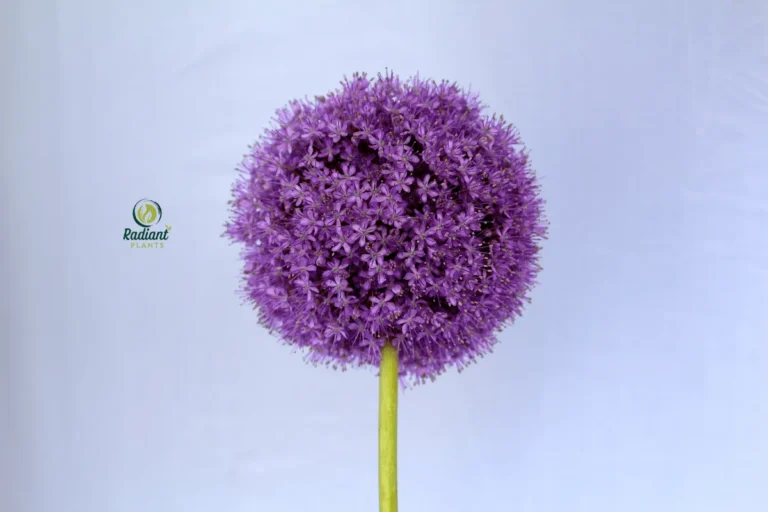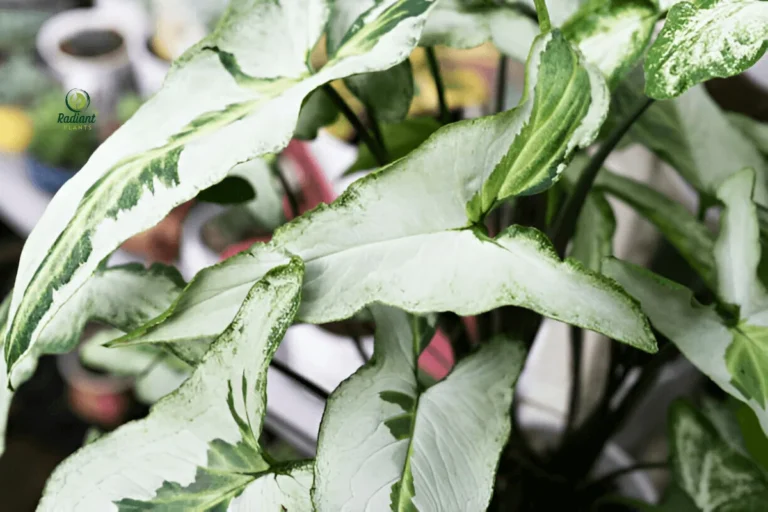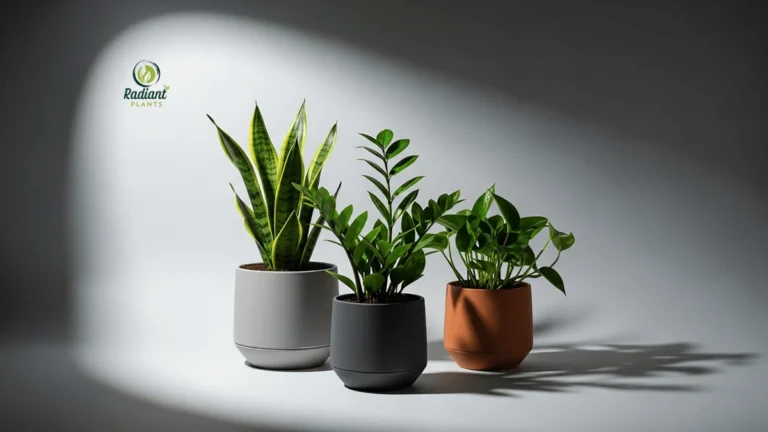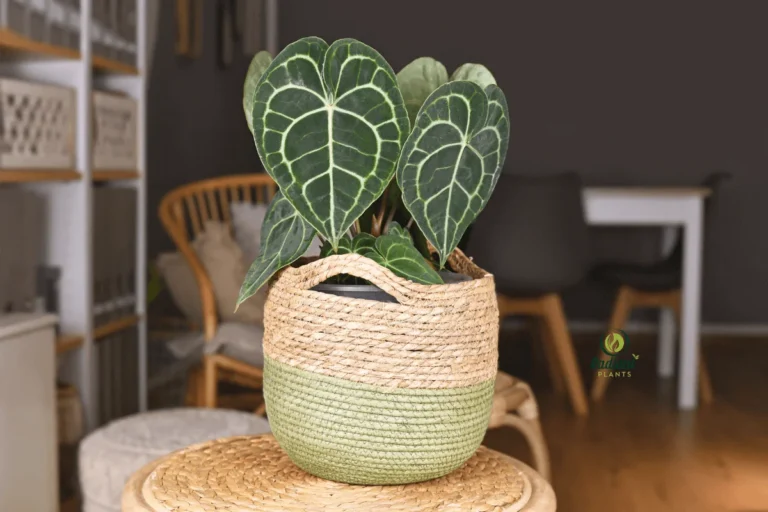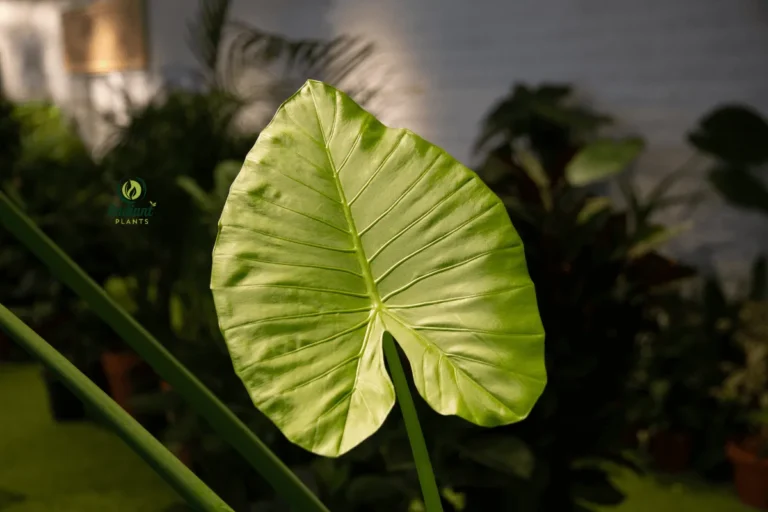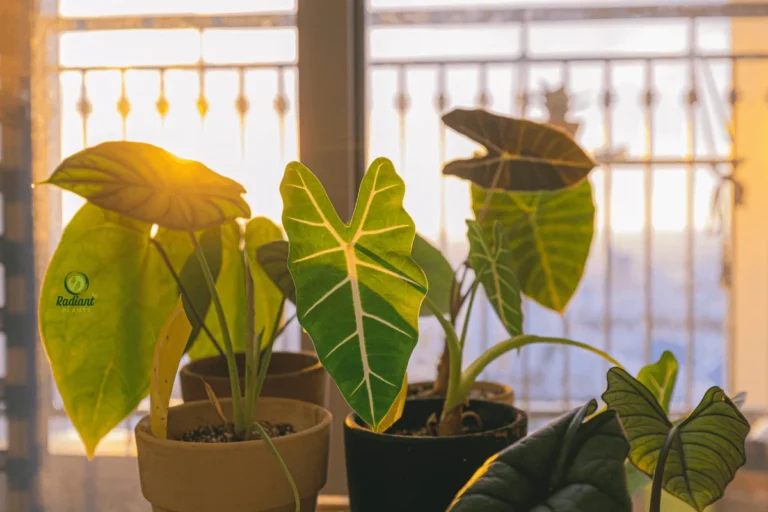Purple Passion Plant: A Unique Houseplant with Vibrant Color
If you’re looking for a houseplant that stands out with a bold and exotic touch, the Purple Passion Plant (Gynura aurantiaca) is a must-have! With its vibrant purple, velvety leaves, and easy-to-care-for nature, this striking plant brings an instant pop of color to any indoor space.
Native to Southeast Asia, the Purple Passion Plant is known for its trailing growth habit, making it a great choice for hanging baskets or as a stunning tabletop display. However, keeping its deep purple hue vibrant requires the right balance of light, water, and nutrients.
In this guide, we’ll cover everything you need to know about growing and caring for the Purple Passion Plant—from the best light conditions and watering schedule to common problems and solutions. Whether you’re a beginner or an experienced plant parent, this guide will help you keep your Purple Passion thriving!
Table of Contents
Feature | Details |
|---|---|
Common Name | Purple Passion Plant, Velvet Plant |
Botanical Name | Gynura aurantiaca |
Plant Type | Perennial, Houseplant |
Mature Size | 1–2 feet tall, 1–2 feet wide |
Sunlight | Bright, indirect light |
Soil Type | Well-draining, rich soil |
Watering | Keep soil moist but not soggy |
Humidity | Prefers high humidity |
Temperature | 60–75°F (16–24°C) |
Fertilizing | Monthly during growing season |
Propagation | Stem cuttings |
Toxicity | Non-toxic but can cause irritation |
Special Features | Velvety purple leaves, fast-growing |
What is the Purple Passion Plant?



The Purple Passion Plant (Gynura aurantiaca), also known as the Velvet Plant, is a striking houseplant loved for its deep purple, velvety foliage. Its fuzzy leaves, covered in fine purple hairs, create a shimmering effect, making it a standout addition to any indoor garden.
Origin and Background
- Native to Southeast Asia, particularly Indonesia and Java.
- Belongs to the Asteraceae family, the same family as sunflowers and daisies.
- Grows as a trailing or upright perennial, making it perfect for hanging baskets or as a tabletop plant.
What Makes It Unique?
- Its purple hue is most vibrant under bright, indirect light.
- Unlike many plants, its beauty comes from its leaves, not its flowers.
- It can produce small orange flowers, but they have an unpleasant odor—many plant owners trim them off.
Growth Habit & Lifespan
- Grows quickly and can reach 1–2 feet tall and wide indoors.
- Best enjoyed in its youthful phase, as the plant can become leggy over time.
- Often grown as a short-lived perennial but can be propagated easily to maintain fresh growth.
The Purple Passion Plant is a fantastic choice for anyone looking to add bold color and a unique texture to their indoor space. But to keep it looking its best, it requires the right care and environment—which we’ll cover in the next sections!
The Best Light Conditions for a Healthy Purple Passion Plant
The Purple Passion Plant (Gynura aurantiaca) thrives in the right lighting conditions, which help maintain its vibrant purple color. Without adequate light, the plant may lose its signature hue and turn green.
Ideal Light Requirements
- Prefers bright, indirect light for at least 6–8 hours a day.
- East or west-facing windows are ideal to provide a balanced amount of light.
- If placed in a south-facing window, use a sheer curtain to diffuse direct sunlight.
What Happens with Too Much or Too Little Light?
- Too much direct sunlight: This can scorch the leaves, causing them to dry out and fade.
- Too little light: The plant may become leggy, and the leaves can turn more green than purple due to reduced anthocyanin production.
Can It Survive in Low Light?
- While it can tolerate low light, it won’t thrive. The plant’s vibrant purple hue will fade, and growth may slow down.
- If natural light is insufficient, consider using a grow light to supplement it. Choose an LED grow light with a full spectrum for the best results.
Light Tips for a Thriving Plant
✔ Rotate the plant regularly to ensure even light exposure and balanced growth.
✔ Keep an eye on the leaf color—if it starts turning green, move it to a brighter spot.
✔ Avoid placing it in deep shade or dimly lit rooms for long periods.
Providing the right amount of bright, indirect light is key to keeping your Purple Passion Plant looking lush and colorful! 🌿💜
Watering Schedule: How to Keep Your Purple Passion Plant Thriving
Watering is a crucial aspect of Purple Passion Plant (Gynura aurantiaca) care. Too much water can cause root rot, while too little can lead to wilting and leaf damage. Striking the right balance ensures your plant stays healthy and vibrant.
How Often Should You Water?
- Water when the top 1–2 inches of soil feel dry.
- Typically, this means watering once every 5–7 days in warm months and every 10–14 days in cooler months.
- Reduce watering during the winter when the plant’s growth slows down.
Signs of Overwatering and Underwatering
✅ Overwatering Signs:
- Yellowing leaves and mushy stems.
- Drooping, despite wet soil.
- Mold or fungus gnats in the soil (a sign of excess moisture).
✅ Underwatering Signs:
- Wilting leaves that perk up after watering.
- Brown, crispy edges on leaves.
- Dry, compact soil is pulled away from the pot.
Best Watering Practices
✔ Use lukewarm, filtered water to avoid shocking the roots.
✔ Water at the base to prevent moisture from sitting on the velvety leaves, which can cause rot.
✔ Ensure proper drainage by using a well-draining soil mix and a pot with drainage holes.
✔ If using tap water, let it sit for 24 hours to allow chlorine to dissipate.
By following these watering guidelines, you’ll keep your Purple Passion Plant hydrated without the risk of overwatering or root rot. 🌿💜
Choosing the Right Soil for Your Purple Passion Plant
Selecting the right soil is essential for the health of your Purple Passion Plant (Gynura aurantiaca). A well-draining, nutrient-rich soil mix ensures that your plant’s roots are healthy and can access the necessary moisture and nutrients.
Why Well-Draining Soil Is Important
- Purple Passion Plants are susceptible to root rot if the soil retains too much water.
- A well-draining mix allows excess water to escape, preventing soggy conditions that can lead to root suffocation.
- The plant’s roots need access to both moisture and air, which is why a good balance of moisture retention and aeration is crucial.
Best Soil Mix for Purple Passion Plant
- Peat-based mix: A light, fluffy mix that retains some moisture but doesn’t become waterlogged.
- Add perlite or vermiculite to the mix to increase aeration and improve drainage.
- You can also add coconut coir to improve moisture retention without becoming too soggy.
How to Make Your Soil Mix
- 2 parts peat moss or coconut coir
- 1 part perlite
- 1 part vermiculite (optional)
- This mix will ensure good drainage while providing the nutrients your plant needs.
Tips for Maintaining Soil Health
✔ Repot every 1–2 years to refresh the soil mix and give your plant room to grow.
✔ Check for root rot regularly—if the soil smells musty, it could be a sign of overwatering or poor drainage.
✔ If your plant outgrows its pot, increase pot size by 1–2 inches to avoid root crowding.
Choosing the right soil ensures that your Purple Passion Plant stays happy and thriving. By focusing on drainage and aeration, you’ll keep your plant’s roots healthy and vibrant. 🌱
10 Stunning Purple Plants to Add a Pop of Color to Your Garden
How to Propagate a Purple Passion Plant Successfully
One of the joys of owning a Purple Passion Plant (Gynura aurantiaca) is that it’s easy to propagate, allowing you to grow more plants or share them with friends. Whether you’re looking to revitalize a leggy plant or expand your collection, propagation is a simple and rewarding process.
Best Method for Propagation: Stem Cuttings
The most effective way to propagate your Purple Passion Plant is through stem cuttings. This method is easy and ensures that the new plant has the same vibrant color and characteristics as the parent.
Step-by-Step Guide to Propagating Purple Passion Plant
- Select a Healthy Stem:
- Choose a healthy, non-flowering stem that’s about 4–6 inches long.
- Ensure the stem has several leaves and no signs of disease or pests.
- Cut the Stem:
- Use a sharp, sterilized pair of scissors or pruning shears to make a clean cut just below a leaf node.
- Remove any lower leaves that would be submerged in water or soil.
- Water or Soil Propagation:
- Water propagation: Place the cutting in a glass of water, ensuring the cut end is submerged. Change the water every 2-3 days.
- Soil propagation: Plant the cutting directly into a small pot with well-draining soil. Keep the soil lightly moist.
- Create a Humid Environment:
- Cover the cutting with a plastic bag or place it in a propagation dome to keep the humidity high and encourage root growth.
- Ensure it’s in a bright, indirect light spot, and keep the temperature around 70-75°F (21-24°C).
- Wait for Roots to Develop:
- After 2–4 weeks, you should start to see roots developing.
- If propagating in water, you’ll notice small roots after 2 weeks. In soil, check by gently tugging the cutting to see if it resists.
- Transplant to Soil:
- Once the cutting has developed strong roots, transplant it into a larger pot with the same well-draining soil mix used for the parent plant.
Tips for Successful Propagation
✔ Keep the cutting in warm, bright conditions with indirect light.
✔ Be patient—rooting can take several weeks.
✔ Ensure proper drainage in the pot when transplanting to prevent root rot.
✔ If propagating multiple cuttings, keep them close together for a fuller, bushier plant.
Propagation is an excellent way to ensure your Purple Passion Plant continues to thrive, and with these steps, you’ll soon have a whole new crop of plants to enjoy or share! 🌿💜
Common Problems and Solutions for the Purple Passion Plant
Despite being relatively easy to care for, the Purple Passion Plant (Gynura aurantiaca) can still encounter a few issues. Identifying problems early and knowing how to address them will keep your plant healthy and vibrant. Here are some common problems and their solutions:
1. Leaves Turning Green
One of the most noticeable issues with the Purple Passion Plant is when its vibrant purple leaves turn green or lose their color.
Causes
- Low light: Insufficient light leads to a loss of the purple pigment called anthocyanin.
- Excessive fertilizer: Over-fertilizing can cause the plant to focus on growth rather than producing its signature color.
Solutions
- Move your plant to a brighter location with indirect light.
- Avoid over-fertilizing. Fertilize only during the growing season (spring and summer) and dilute the fertilizer to half-strength.
2. Brown or Crispy Leaf Edges
If you notice brown, crispy edges on your plant’s leaves, this could be a sign of dehydration or other environmental stress.
Causes
- Underwatering: The plant may not be receiving enough moisture.
- Low humidity: Purple Passion Plants thrive in high humidity, and dry air can cause the edges to brown.
- Exposure to drafts: Cold drafts from windows or air conditioners can dry out the plant.
Solutions
- Check the watering schedule and ensure the plant is getting enough water when the top 1–2 inches of soil are dry.
- Increase humidity around the plant by using a humidifier or placing a shallow water tray near the plant.
- Avoid placing the plant near cold drafts or heating vents.
3. Root Rot
Root rot is a serious issue that can occur if the plant’s roots are left sitting in waterlogged soil for too long. It can lead to the plant wilting and eventually dying.
Causes
- Overwatering or poorly draining soil.
- Lack of proper drainage in the pot.
Solutions
- Always ensure the pot has drainage holes, and avoid letting the plant sit in water.
- Check the soil regularly—if it feels soggy, let it dry out before watering again.
- If root rot is severe, carefully remove the plant from its pot, trim away any rotten roots, and repot it in fresh, well-draining soil.
4. Pests and Insects
Though not very common, pests can sometimes invade the Purple Passion Plant.
Common Pests
- Spider mites: Tiny, webbing insects that can cause yellow spots on leaves.
- Mealybugs: Small, white insects that cluster along the stems and leaf joints.
- Aphids: Tiny green or black bugs that suck sap from the plant.
Solutions
- Inspect regularly for pests and remove them by wiping the leaves with a damp cloth or spraying them off with water.
- For heavy infestations, treat the plant with insecticidal soap or neem oil.
- Keep the plant clean and free of dead leaves to minimize hiding spots for pests.
5. Leggy Growth
Over time, your Purple Passion Plant may become leggy, with long, spindly stems and sparse leaves.
Causes
- Low light: The plant stretches to find light, causing weak, tall growth.
- Not enough pruning: The plant can become leggy without regular trimming.
Solutions
- Move the plant to a brighter spot with indirect light to encourage more compact growth.
- Regularly prune the plant by cutting back long stems to encourage bushier growth.
By addressing these common issues early, you’ll keep your Purple Passion Plant healthy and thriving. With the right care, this unique houseplant will continue to brighten up your home with its vibrant colors. 🌿💜
Fertilizing Your Purple Passion Plant for Maximum Growth
Fertilizing is an essential aspect of caring for your Purple Passion Plant (Gynura aurantiaca) to promote healthy growth and vibrant color. Proper feeding helps the plant develop strong roots, lush foliage and maintain its stunning purple hue.
Best Fertilizer for Purple Passion Plant
- Balanced liquid fertilizer with equal parts of nitrogen (N), phosphorus (P), and potassium (K) (e.g., 20-20-20).
- Organic fish emulsion or compost tea are also great options for a more natural approach.
- Choose a slow-release fertilizer if you prefer less frequent feeding.
Fertilizing Frequency
- During the growing season (spring and summer): Fertilize once a month.
- During the dormant season (fall and winter): Cut back on fertilizing as the plant’s growth slows. Fertilize only once every 6-8 weeks or not at all during winter.
How to Fertilize Your Purple Passion Plant
- Water the Plant First:
- Always water the plant before applying fertilizer to prevent root burn.
- Dilute the Fertilizer:
- Dilute the fertilizer to half-strength to avoid overfeeding, which can lead to leaf burn or weak growth.
- Apply Evenly:
- Apply the fertilizer directly to the soil, avoiding contact with the leaves.
- Avoid Fertilizing Immediately After Repotting:
- Wait about a month before fertilizing after repotting, as the new soil will have enough nutrients initially.
Signs of Over-Fertilization
- Yellowing leaves or crispy tips.
- Stunted growth or weak stems.
- Salt buildup on the surface of the soil.
If you notice signs of over-fertilizing, flush the soil with water to remove excess fertilizer and reduce feeding frequency.
Organic Fertilizing Options
- Compost: A great natural option for enriching the soil with nutrients.
- Worm castings: These are an excellent source of micro-nutrients and help improve soil structure.
- Seaweed extract: High in trace elements and ideal for promoting healthy plant growth.
By fertilizing your Purple Passion Plant properly, you’ll help it achieve its full potential, producing vibrant purple leaves and healthy, strong growth year after year! 🌿💜
Styling and Displaying Your Purple Passion Plant Indoors
The Purple Passion Plant (Gynura aurantiaca) is not only a stunning addition to any plant collection, but its vibrant purple and green foliage also makes it a unique statement piece in your indoor space. Whether you’re looking to showcase its beauty in a prominent spot or add a splash of color to a more subtle corner, here are some creative ideas for styling and displaying your Purple Passion Plant indoors.
1. Perfect Placement: Where to Display Your Purple Passion Plant
- Bright, Indirect Light: The Purple Passion Plant thrives in bright, indirect light. Place it near a window where it gets plenty of light but isn’t exposed to direct sun, which could scorch its delicate leaves.
- Avoid Drafty Areas: Keep your plant away from cold drafts or air conditioners, as it prefers warm, stable temperatures (70-75°F / 21-24°C).
- Elevated Spaces: Use a plant stand, shelf, or hanging planter to display your Purple Passion Plant at eye level, allowing its cascading vines to create a dramatic effect.
2. Use Color to Complement Its Vibrant Foliage
- Contrast with Greenery: The purple tones of the Purple Passion Plant stand out beautifully against green plants. Consider grouping it with green foliage plants like Snake plants, Pothos, or ZZ plants to create a striking contrast.
- Pair with Neutral Decor: The bold colors of the Purple Passion Plant work well with neutral tones like white, gray, and beige. Place it on a light-colored surface to enhance its vivid hue.
- Accent with Bright Colors: For a more playful aesthetic, pair the plant with bright, colorful pots in shades like yellow, teal, or coral to further highlight its unique look.
3. Pot and Container Selection
- Decorative Pots: Choose a decorative pot that complements the plant’s color and your home decor. Consider a ceramic pot with a textured finish or a sleek, minimalist design.
- Hanging Baskets: If you want to showcase the trailing vines, place your Purple Passion Plant in a hanging basket or macramé hanger to allow it to cascade down beautifully.
- Textured Containers: Opt for woven baskets or woven planters for a rustic, natural touch that contrasts nicely with the plant’s vibrant colors.
4. Create a Statement Display
- Plant Corner: Designate a corner of your living room or bedroom for your Purple Passion Plant. Pair it with other statement plants to create a tropical-inspired plant corner that instantly catches the eye.
- Vertical Garden: If you’re tight on space, create a vertical garden by placing several plants on floating shelves, wall-mounted planters, or even a ladder-style plant stand. This will give your Purple Passion Plant the height and attention it deserves.
- Plant Wall: For a more modern and creative approach, you can even use wall-mounted planters to create a living wall, with your Purple Passion Plant featured prominently as part of the display.
5. Benefits of Styling Your Purple Passion Plant
- Air Purification: Like many other houseplants, the Purple Passion Plant helps improve air quality by absorbing carbon dioxide and releasing oxygen.
- Aesthetic Appeal: The plant’s unique color and texture bring a pop of color to any room, making it a focal point in living spaces, dining rooms, and bedrooms.
- Mood Enhancement: Studies have shown that indoor plants can enhance mood, reduce stress, and even boost productivity. Your Purple Passion Plant could become your new favorite plant therapy!
By thoughtfully styling and displaying your Purple Passion Plant, you’ll not only enhance its beauty but also create a stunning and vibrant atmosphere in your home. Whether it’s placed on a shelf, hanging from the ceiling, or sitting pretty in a decorative pot, this plant will always stand out. 🌿💜
Conclusion
The Purple Passion Plant (Gynura aurantiaca) is a striking and unique addition to any indoor plant collection. With its stunning, vibrant purple foliage, easy propagation, and relatively simple care needs, it’s an ideal choice for plant enthusiasts looking to bring a burst of color to their home. By providing it with the right light, watering schedule, and fertilization, along with regular attention to common issues like pests or root rot, you’ll ensure that your Purple Passion Plant thrives for years to come.
Whether you’re displaying it on a plant stand, in a hanging basket, or as part of a vibrant plant corner, this houseplant’s beauty will undoubtedly draw attention and elevate your indoor decor. The Purple Passion Plant not only adds a touch of elegance to your space but also contributes to a healthier, more vibrant environment.
With the right care and styling, your Purple Passion Plant can become the showstopper of your indoor garden, filling your home with color, life, and a touch of nature’s magic. 🌿💜
Happy planting! 😊
FAQs About Purple Passion Plant
What is a Purple Passion Plant?
The Purple Passion Plant (Gynura aurantiaca) is a striking houseplant known for its vibrant, fuzzy, purple leaves with hints of green. It is native to tropical regions and is popular for its unique appearance and low-maintenance care needs.
How often should I water my Purple Passion Plant?
Water your Purple Passion Plant when the top 1–2 inches of soil feel dry. This typically means watering once a week during the growing season (spring and summer). In winter, water less frequently since the plant’s growth slows down.
Can the Purple Passion Plant tolerate direct sunlight?
No, the Purple Passion Plant prefers bright, indirect light. Direct sunlight can scorch its delicate leaves and cause them to lose their vibrant color. Place it near a window with filtered light or in a well-lit room.
How do I propagate a Purple Passion Plant?
The Purple Passion Plant can be propagated by cuttings. Cut a healthy stem just below a leaf node, remove the lower leaves, and place it in water or moist soil until roots form, which usually takes a few weeks.
Why are the leaves of my Purple Passion Plant turning green?
If your Purple Passion Plant’s leaves are turning green, it’s likely due to insufficient light. The plant’s purple color is due to a pigment called anthocyanin, which fades when the plant doesn’t get enough light. Move it to a brighter spot with indirect light.
How do I prevent my Purple Passion Plant from becoming leggy?
To avoid leggy growth, make sure your plant is getting bright, indirect light. Regular pruning of long, spindly stems will help promote bushier growth and keep your plant looking full and healthy.
What is the best soil for a Purple Passion Plant?
Purple Passion Plants prefer a well-draining potting mix. A general houseplant mix works well, but you can also add perlite or sand to improve drainage. This helps prevent root rot and promotes healthy growth.
How do I deal with pests on my Purple Passion Plant?
Common pests such as spider mites, mealybugs, and aphids may occasionally target your Purple Passion Plant. Treat infestations by wiping the leaves with a damp cloth, spraying with insecticidal soap or neem oil, or removing pests by hand.
Can I keep my Purple Passion Plant outside?
The Purple Passion Plant is typically grown indoors, but if you live in a tropical climate, you can place it outside in a shaded area during the warmer months. Just ensure it’s protected from direct sunlight and cold temperatures.
How fast does the Purple Passion Plant grow?
The Purple Passion Plant has a moderate growth rate. With proper care, it can grow 1–2 feet (30–60 cm) in a year, depending on light, water, and fertilization.
Can I use fertilizer for my Purple Passion Plant?
Yes! Fertilizing your Purple Passion Plant during the growing season (spring and summer) helps it thrive. Use a balanced liquid fertilizer or organic options like fish emulsion every 4-6 weeks. Avoid over-fertilizing as it can cause leaf burn.
Feel free to reach out if you have any other questions or need more detailed advice on your Purple Passion Plant care! 🌿💜


